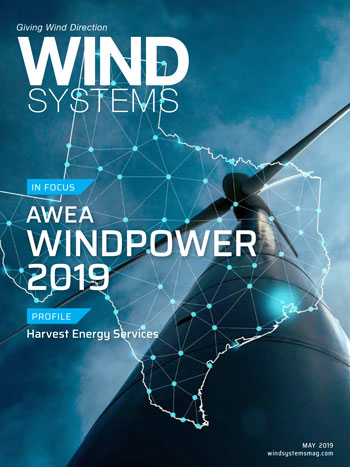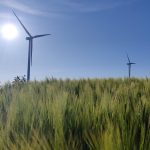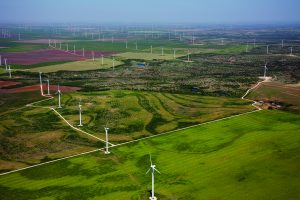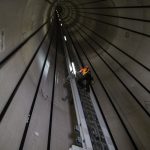The worldwide increase in demand for renewable energy has fueled the investment and technological advancements in wind turbines. But the largest opportunities are not necessarily the newest designs or the largest turbines — they are in the maintenance processes used to maintain existing turbines and install future turbines. The winds of change are blowing, and they’re blowing in a renewable future.
Necessary Maintenance Updates
Despite the growing investment in and demand for wind power, wind-turbine installation and maintenance are using outdated project management processes. Existing methods rely on traditional data collection methods — chiefly pen and paper recordings of maintenance work. According to MAKE Consulting, a research firm focused on renewable energy, global wind production is expected to double by 2027. To maintain this strong growth, the wind-energy industry is required to optimize maintenance procedures, workflow, and efficiency.
Technicians must adhere to routine maintenance practices to compile detailed records. The more thorough a record, the more data can be used to enable inspectors to provide quick prognoses of necessary maintenance or repairs. Attention to detail and organization, and the resulting speedy prognosis, can optimize the life of a turbine and reduce downtime and loss of energy production. Overall, to maximize a wind farm’s energy generation, wind-turbine technicians require an updated method of communicating and collaborating with inspectors.
High Demand For Inspectors Poses Challenges
While the role of a wind-turbine technician is important, no wind turbine can be used without an inspector’s approval. The multiple, high-level skillsets and extensive experience required to become a wind-turbine inspector creates a high demand for their expertise. Currently, there is a shortage of wind-turbine inspectors.
Additionally, inspectors must travel to the remote locations onshore and offshore to inspect turbines. During this travel, their skills are not used. New technology can encourage inspectors’ skillsets to be used more efficiently and enable the wind-energy industry to keep up with the growing demand for wind power.

Technological Advancements
Recent technological advancements in wind-turbine inspections can provide more efficient installation, maintenance, and repairs. Wind-turbine inspection paired with maintenance software is a solution for the need to update current maintenance practices. Using this software, inspectors can approve inspections from a centralized office. Inspectors do not have to travel to distant sites and can use their time more efficiently to communicate and collaborate with technicians. Technicians can also work more efficiently, since they do not have to wait for inspectors to arrive on site. If a technician needs to speak with an inspector, he or she can schedule a videoconference session. Wind-turbine maintenance software can facilitate a decrease in travel, as well as the increase in communication and collaboration, so the overall number of approved turbine inspections can increase without having to hire new personnel.
Wind-turbine maintenance software should be chosen based upon its capabilities, scalability, and reliability. Enhanced functionalities maximize safety, efficiency, accuracy, and accountability and encourage the wind-energy industry’s quick growth.
Here are some key capabilities and functionalities that should be considered in wind-turbine maintenance software, and how they can be implemented and used:
Visual Inspection-Recordings
• Video recording and audio recording functionality should be a top priority when identifying the correct wind-turbine maintenance software. Wind-turbine inspectors must be able to use their desktop or mobile device to record a videoconference session with technicians. Wind-turbine technicians should be able to use their smartphone or tablet to record any onsite maintenance or repair, and upload the file for inspection.
• Additional enhanced features should include time stamps in video and audio recordings. Time stamps ensure viewers replaying the recording can quickly be taken to an exact moment in the video. If a recording must be paused or stopped, it should be concatenated into the original master recording to avoid confusion while reviewing multiple files.
• Make sure to invest in software that includes cloud storage and be sure to ask questions about low bandwidth or high latency — low bandwidth should never interfere with a technician’s ability to capture and share quality recordings or images with an inspector.
Wind-Turbine Maintenance Checklist
• Using a wind-turbine maintenance checklist, inspectors can create a punch list, or job cards. This functionality prioritizes and organizes tasks that must be performed in order to approve a wind-turbine inspection. This checklist ensures each task is completed up to industry standards and government regulations.
• Visual data, including time-stamped videos and audio recordings, images, and chats should be uploaded to each corresponding item, or task, on the wind-turbine maintenance checklist. This visual data provides accuracy and a record of visual inspection. The visual and audio data ensures the inspection was completed as if the inspector was at the site.
• A sign of quality wind-turbine maintenance software is functionalities that encourage organization and collaboration. All data on the wind-turbine maintenance checklist should be organized through customizable labels and the ability to easily update the status of each task.
• The software company should guarantee that checklists are customizable. Customizable checklists will allow inspectors to create a checklist for a singular instance of repair, or a master checklist, which can be created, replicated, and used to inspect many wind turbines of the same model. A scalable solution will be necessary as wind farms expand and technological advancements are made.
Visual Inspection-Images
• Complex inspections of wind turbines necessitate precise visual acuity. Wind-turbine maintenance software should enable technicians to use screen capture and high-definition video-recording functionality.
• Using these functionalities, the technicians are able to capture screen shots of high-definition video recordings and take photos of maintenance work. Technicians can then upload these images to the inspection checklist and share them with the inspector and maintenance team. The inspector should be able to mark up the images with lines, arrows, circles, text, and more to show exactly what maintenance work must be done.
• Using the enhanced data, the inspector can make an informed decision on the maintenance and repairs needed, provide quick feedback to the technician, and keep all data as records of quality assurance.

Security
• Security must be maximized in all stages of the inspection, including data stored at rest post-inspection. Ensure all communication is encrypted, and the software should include robust virus protection on the server level. The software should also feature multifactor authentication for administrator-level users and multiple-user roles.
• Only users with matching roles and permissions need access to files, so this feature will further protect restricted and confidential information. Always confirm the privacy agreement: The software provider should never share data with third parties without explicit permission.
Enhanced Data Reporting and Analysis
• To analyze and adapt wind turbines and wind farms to specific needs, wind-turbine software must enable customizable data analysis. This information can be used to discern patterns and trends in wind-turbine models, maintenance processes, or maintenance teams.
• Furthermore, customizable reports can be produced and analyzed to optimize wind-turbine investments, safety, accountability, and MRO practices.
Support For Third-Party Devices
• Wind-turbine maintenance software should efficiently integrate with other third-party software and devices, such as smart goggles and/or a borescope.
• This integration can be used to capture images both inside and outside of a wind turbine during repair and maintenance and provide enhanced records as well as quality assurance.
Customer Service and User Training
When considering wind-turbine maintenance software, wind-energy companies should have a detailed understanding of the training and technical support that will be provided. The software company should include training sessions, webinars, and online and onsite support services as needed.
Daniel Gilbert, founder and CEO of a maintenance, repairs and operations (MRO) software company, CloudVisit, said, “Inspectors and technicians are only as good as the tools and support they’re given. If the tools don’t meet their needs, or they haven’t been trained properly on how to use the technology, then they won’t be able to perform their jobs.”
Scalable Software for Future Advancements
Wind energy is quickly expanding around the world and is piquing interest from many, including corporations. Google, Amazon, Budweiser, Gap Inc., and MGM Resort International, along with other companies, have made considerable investments in wind energy. Projected growth rates and widespread technological advancements necessitate a swift solution to provide quick maintenance of wind farms. The solution must also be scalable, as there continues to be investment and research into Airborne Wind Energy Systems (AWES).
In any case, current and future technologies will need to have a quick and efficient method of installing new structures in addition to a comprehensive and consolidated record of maintenance. Wind-turbine maintenance software can provide a scalable solution to an evolving industry, and can be used to facilitate major growth in wind energy through enhanced inspection efficiency now and into the future.
































